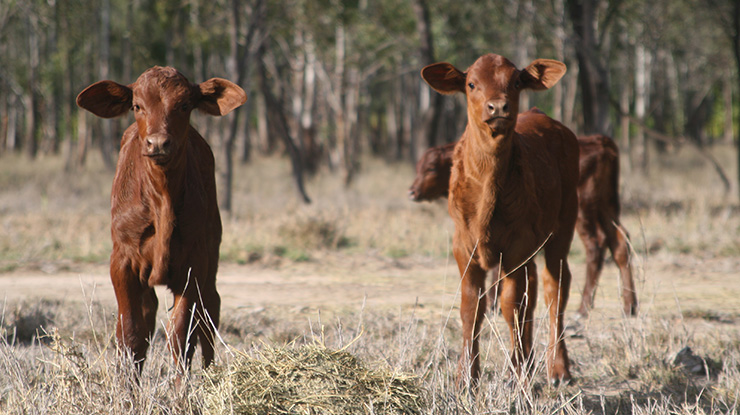 Understanding the causes of reproductive loss can help lift whole‑herd productivity
Understanding the causes of reproductive loss can help lift whole‑herd productivity
Tips to target better beef reproduction
Reproductive loss has a large impact on the performance of northern beef herds, so MLA has developed a toolbox of information to provide practical steps to get more calves on the ground.
There are many reasons for calf loss (in utero or post calving) but unless calves are examined soon after abortion or death, it can be difficult to determine the cause.
Understanding the causes of reproductive loss is important to find a solution, to lift whole‑herd productivity as well as increase profitability, as every breeder that fails to produce a weaner can reduce business income by approximately $400/head.
MLA’s suite of Reproductive Performance Tips & Tools helps producers improve the reproductive performance of their herd.
The first step is to determine when losses are occurring to work out if the problem is failure to conceive, abortion or losses at or after calving.
Here are four tips to diagnose reproductive loss on‑farm this autumn:
- Check cow body condition: If pregnant cows are in body condition score less than 2.5, nutrition could be an issue – check their pastures and supplementation program.
- Review pregnancy status of different age groups: Lower pregnancy rates in first‑calf cows than mature cows can indicate nutritional issues.
- Benchmark maiden heifer performance: Low pregnancy rates in maiden heifers may mean they were below critical mating weight at joining. If they are above critical mating weight, this may indicate an underlying disease exists.
- Assess fat breeder cows: Most cows should be pregnant to achieve the goal of one well‑grown weaner per breeder, per year. A non‑lactating cow at pregnancy diagnosis suggests abortion or calf loss. Fat, non‑lactating and non‑pregnant cows suggest a permanent infertility problem.
Dig deeper with data
Another way to determine what’s causing reproductive loss is to submit samples for analysis from non‑pregnant breeders or deceased calves.
Sampling and recording data can help identify reproductive diseases. Consult your veterinarian on how to collect and store samples for pathological diagnosis.
When collecting samples, focus on:
Cow history: Accurately record identity, the property identification code (PIC), age, pregnancy status, lactation status and body condition score for animals sampled.
Calf/foetal/placenta specimens: Collect a fresh foetus, deceased calf or placenta (if available). If a veterinarian is unavailable to collect, keep fresh specimens chilled until one can be contacted.
Cow samples: Collect 15–30 blood samples and vaginal swabs from identified mobs of non‑pregnant and pregnant cows. Keep records for each cow sampled.
Bull samples: Collect swabs from the prepuce of bulls where the pregnancy rate is low or a venereal disease is suspected in the breeder herd.



